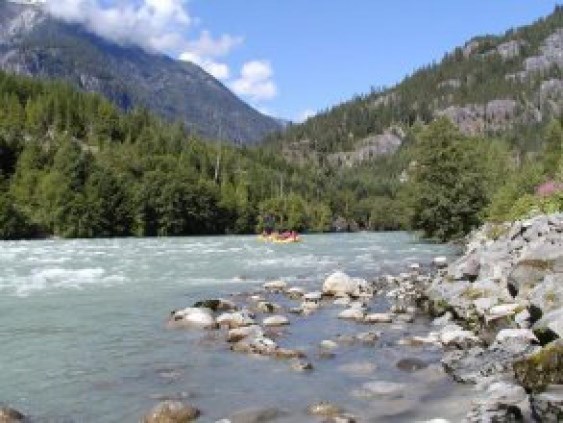Raves are usually associated with locations like warehouses in cities like Manchester, England.
The backcountry of B.C. is not usually the first place that springs to mind, but in recent years, people have been sneaking into areas like the Upper Squamish Valley to hold unauthorized events such as the dance parties.
“The areas we’re talking about are mainly beyond the paved road,” said Tony Rainbow, regional district director for Electoral Area D, which includes the Upper Squamish. “A lot of these were occurring in that area.”
The events take place beyond the forest service road in the bush, roughly 60 to 70 kilometres from Squamish.
As Rainbow said, the events are cleverly organized, happen at the last minute and tend to be advertised through social media networks. That they also occur in remote locations only makes catching the perpetrators more difficult.
The raves typically take place near riverbanks, and the problem is that the participants leave behind a mess.
“The problem is the damage they do to the environment… the garbage, the human waste,” Rainbow said.
The situation is not new, and if anything this past summer saw a decline of infractions, which could have had a lot to do with the Elaho fire that closed the road.
As to what will happen in 2016, Rainbow is not sure. “We’ll have to wait until next summer when the road’s open and see what happens.”
An Oct. 22 letter from Minister of the Environment Steve Thomson to the Squamish-Lillooet Regional District refers to the ongoing issue and cites enforcement over the summer as a reason for a decline in the activities.
Rainbow has inspected the sites with conservation officers but thinks enforcement may only do so much.
Even with an apparent decline in 2015, there were still many people accessing the area this summer. A letter from the regional district to the province in August states that police and provincial enforcement officials conducted a road check in the Upper Squamish Valley over the Victoria Day weekend and recorded an estimated 3,000 individuals accessing the backcountry using the forest service road.
The raves are not the only issue. Another unauthorized activity happening the Upper Squamish, according to the Area D director, is the presence of firing ranges.
“Probably just as important are illegal gun sites up there,” Rainbow said.
The most obvious signs of this activity are shotgun and automatic weapon casings left behind. Of serious concern is the fact that there is a hiking trail near a shooting site.
No one is sure how many people go up to the Upper Squamish over time or who is responsible for the unauthorized activities, although Rainbow does not think they are local. Thomson’s letter appears to back that up, as he states that there has been a general increase in backcountry activity in the region since the upgrade of the Sea to Sky Highway.
The provincial government is looking for some kind of coordinated approach with the regional district to deal with enforcement.
Rainbow’s response is that the regional district, while sympathetic, is not in a position to hire staff for such activities, which typically fall to the police or conservation officers.
“We don’t really have a mechanism to do something like that,” he said.
In general, Rainbow said, the backcountry is under pressure, as people cannot always find areas with toilets and water where they can camp.
“We getting a lot of pressure because there aren’t that many serviced campsites.”



